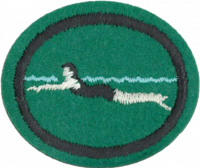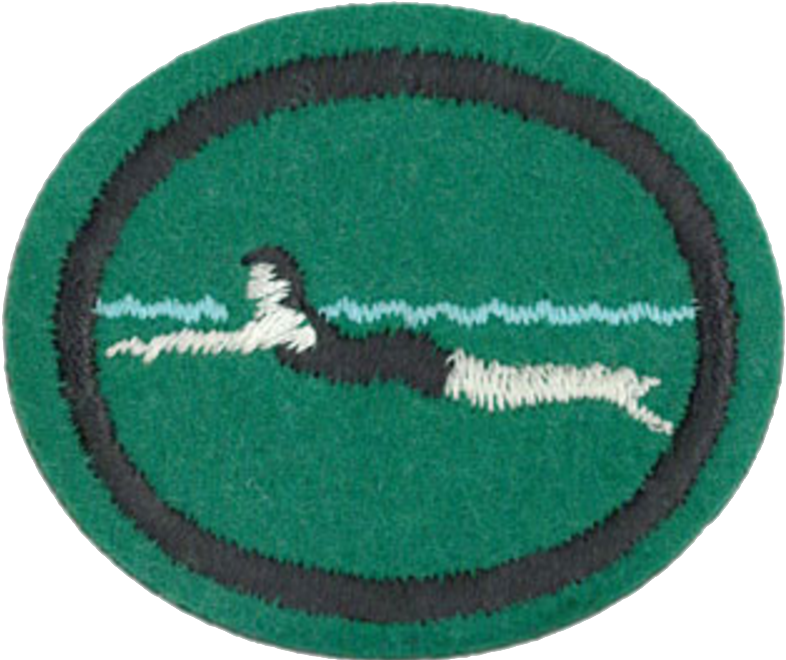Difference between revisions of "AY Honors/Swimming - Beginner/Answer Key 2"
From Pathfinder Wiki
< AY Honors | Swimming - BeginnerAY Honors/Swimming - Beginner/Answer Key 2
| (62 intermediate revisions by 7 users not shown) | |||
| Line 1: | Line 1: | ||
| − | {{ | + | {{HonorSubpage}} |
| + | {{#vardefine:reqpage|{{#titleparts:{{PAGENAME}}|2}}/Requirements 2}} | ||
| − | == | + | <section begin="Body" /> |
| + | {{ansreq|page={{#var:reqpage}}|num=1}} | ||
| + | <noinclude><translate><!--T:27--> | ||
| + | </noinclude> | ||
| + | <!-- 1. Have completed the Water Safety Honor Requirements --> | ||
| + | {{honor_prerequisite|honor=Basic Water Safety}} | ||
| − | {{: | + | <!--T:28--> |
| + | <noinclude></translate></noinclude> | ||
| + | {{CloseReq}} <!-- 1 --> | ||
| + | {{ansreq|page={{#var:reqpage}}|num=2}} | ||
| + | <noinclude><translate><!--T:29--> | ||
| + | </noinclude> | ||
| + | <!-- 2. Water Entry Skills: --> | ||
| + | <noinclude></translate></noinclude> | ||
| + | {{ansreq|page={{#var:reqpage}}|num=2a}} | ||
| + | <noinclude><translate><!--T:30--> | ||
| + | </noinclude> | ||
| + | <noinclude></translate></noinclude> | ||
| + | {{CloseReq}} <!-- 2a --> | ||
| + | {{ansreq|page={{#var:reqpage}}|num=2b}} | ||
| + | <noinclude><translate><!--T:31--> | ||
| + | </noinclude> | ||
| + | '''''Headfirst entry should NOT be taught unless the water depth is at least 9 feet.''''' | ||
| + | <noinclude></translate></noinclude> | ||
| + | {{CloseReq}} <!-- 2b --> | ||
| + | {{ansreq|page={{#var:reqpage}}|num=2c}} | ||
| + | <noinclude><translate><!--T:32--> | ||
| + | </noinclude> | ||
| + | '''''Headfirst entry should NOT be taught unless the water depth is at least 9 feet.''''' | ||
| − | == | + | <!--T:33--> |
| − | + | <noinclude></translate></noinclude> | |
| − | + | {{CloseReq}} <!-- 2c --> | |
| − | + | {{CloseReq}} <!-- 2 --> | |
| − | + | {{ansreq|page={{#var:reqpage}}|num=3}} | |
| − | + | <noinclude><translate><!--T:34--> | |
| − | + | </noinclude> | |
| − | + | <!-- 3. Breath Control and Submerging: --> | |
| − | + | <noinclude></translate></noinclude> | |
| − | + | {{ansreq|page={{#var:reqpage}}|num=3a}} | |
| + | <noinclude><translate><!--T:35--> | ||
| + | </noinclude> | ||
| + | {{#widget:YouTube|id=ch5ZgrbhuQI}} | ||
| − | + | <!--T:36--> | |
| + | <noinclude></translate></noinclude> | ||
| + | {{CloseReq}} <!-- 3a --> | ||
| + | {{ansreq|page={{#var:reqpage}}|num=3b}} <!--T:23--> | ||
| + | <noinclude><translate><!--T:37--> | ||
| + | </noinclude> | ||
| + | {{#widget:YouTube|id=6nz2RkuxceA}} | ||
| − | + | <!--T:38--> | |
| + | <noinclude></translate></noinclude> | ||
| + | {{CloseReq}} <!-- 3b --> | ||
| + | {{CloseReq}} <!-- 3 --> | ||
| + | {{ansreq|page={{#var:reqpage}}|num=4}} | ||
| + | <noinclude><translate><!--T:39--> | ||
| + | </noinclude> | ||
| + | <!-- 4. Buoyancy: --> | ||
| + | <noinclude></translate></noinclude> | ||
| + | {{ansreq|page={{#var:reqpage}}|num=4a}} | ||
| + | <noinclude><translate><!--T:40--> | ||
| + | </noinclude> | ||
| − | |||
| − | |||
| − | + | <!--T:41--> | |
| − | + | <noinclude></translate></noinclude> | |
| − | + | {{CloseReq}} <!-- 4a --> | |
| − | + | {{ansreq|page={{#var:reqpage}}|num=4b}} <!--T:24--> | |
| − | + | <noinclude><translate><!--T:42--> | |
| − | + | </noinclude> | |
| − | |||
| − | == | ||
| − | |||
| − | |||
| − | |||
| − | |||
| − | |||
| − | |||
| − | |||
| − | |||
| − | |||
| − | |||
| − | |||
| − | |||
| − | |||
| − | |||
| − | |||
| − | |||
| − | |||
| − | + | ||
| + | <!--T:43--> | ||
| + | <noinclude></translate></noinclude> | ||
| + | {{CloseReq}} <!-- 4b --> | ||
| + | {{CloseReq}} <!-- 4 --> | ||
| + | {{ansreq|page={{#var:reqpage}}|num=5}} | ||
| + | <noinclude><translate><!--T:44--> | ||
| + | </noinclude> | ||
| + | <!-- 5. Changing Positions: --> | ||
| + | <noinclude></translate></noinclude> | ||
| + | {{ansreq|page={{#var:reqpage}}|num=5a}} | ||
| + | <noinclude><translate><!--T:45--> | ||
| + | </noinclude> | ||
| + | <noinclude></translate></noinclude> | ||
| + | {{CloseReq}} <!-- 5a --> | ||
| + | {{ansreq|page={{#var:reqpage}}|num=5b}} | ||
| + | <noinclude><translate><!--T:46--> | ||
| + | </noinclude> | ||
| + | |||
| + | <!--T:47--> | ||
| + | <noinclude></translate></noinclude> | ||
| + | {{CloseReq}} <!-- 5b --> | ||
| + | {{CloseReq}} <!-- 5 --> | ||
| + | {{ansreq|page={{#var:reqpage}}|num=6}} | ||
| + | <noinclude><translate><!--T:48--> | ||
| + | </noinclude> | ||
| + | <!-- 6. Treading Water: --> | ||
| + | <noinclude></translate></noinclude> | ||
| + | {{ansreq|page={{#var:reqpage}}|num=6a}} | ||
| + | <noinclude><translate><!--T:49--> | ||
| + | </noinclude> | ||
| + | |||
| + | |||
| + | <!--T:50--> | ||
| + | <noinclude></translate></noinclude> | ||
| + | {{CloseReq}} <!-- 6a --> | ||
| + | {{CloseReq}} <!-- 6 --> | ||
| + | {{ansreq|page={{#var:reqpage}}|num=7}} | ||
| + | <noinclude><translate><!--T:51--> | ||
| + | </noinclude> | ||
| + | <!-- 7. Front Swim: --> | ||
| + | <noinclude></translate></noinclude> | ||
| + | {{ansreq|page={{#var:reqpage}}|num=7a}} | ||
| + | <noinclude><translate><!--T:52--> | ||
| + | </noinclude> | ||
| + | |||
| + | <!--T:17--> | ||
| + | {{#widget:YouTube|id=_nZNVC4T0p0}} | ||
| + | |||
| + | <!--T:53--> | ||
| + | <noinclude></translate></noinclude> | ||
| + | {{CloseReq}} <!-- 7a --> | ||
| + | {{ansreq|page={{#var:reqpage}}|num=7b}} <!--T:18--> | ||
| + | <noinclude><translate><!--T:54--> | ||
| + | </noinclude> | ||
| + | |||
| + | <!--T:19--> | ||
| + | {{#widget:YouTube|id=0tiEzoSfFXY}} | ||
| + | |||
| + | <!--T:55--> | ||
| + | <noinclude></translate></noinclude> | ||
| + | {{CloseReq}} <!-- 7b --> | ||
| + | {{ansreq|page={{#var:reqpage}}|num=7c}} <!--T:20--> | ||
| + | <noinclude><translate><!--T:56--> | ||
| + | </noinclude> | ||
| + | {{#widget:YouTube|id=ioFydzeYgt8}} | ||
| + | |||
| + | <!--T:57--> | ||
| + | <noinclude></translate></noinclude> | ||
| + | {{CloseReq}} <!-- 7c --> | ||
| + | {{CloseReq}} <!-- 7 --> | ||
| + | {{ansreq|page={{#var:reqpage}}|num=8}} | ||
| + | <noinclude><translate><!--T:58--> | ||
| + | </noinclude> | ||
| + | <!-- 8. Back Swim: --> | ||
| + | <noinclude></translate></noinclude> | ||
| + | {{ansreq|page={{#var:reqpage}}|num=8a}} | ||
| + | <noinclude><translate><!--T:59--> | ||
| + | </noinclude> | ||
| + | {{#widget:YouTube|id=l3TUZRQ2WEk}} | ||
| + | |||
| + | <!--T:60--> | ||
| + | <noinclude></translate></noinclude> | ||
| + | {{CloseReq}} <!-- 8a --> | ||
| + | {{CloseReq}} <!-- 8 --> | ||
| + | {{ansreq|page={{#var:reqpage}}|num=9}} | ||
| + | <noinclude><translate><!--T:61--> | ||
| + | </noinclude> | ||
| + | <!-- 9. Side Swim: --> | ||
| + | <noinclude></translate></noinclude> | ||
| + | {{ansreq|page={{#var:reqpage}}|num=9a}} | ||
| + | <noinclude><translate><!--T:62--> | ||
| + | </noinclude> | ||
| + | {{#widget:YouTube|id=RYewBj0sdKM}} | ||
| + | |||
| + | <!--T:63--> | ||
| + | <noinclude></translate></noinclude> | ||
| + | {{CloseReq}} <!-- 9a --> | ||
| + | {{CloseReq}} <!-- 9 --> | ||
| + | {{ansreq|page={{#var:reqpage}}|num=10}} | ||
| + | <noinclude><translate><!--T:64--> | ||
| + | </noinclude> | ||
| + | <!-- 10. Water Safety: --> | ||
| + | <noinclude></translate></noinclude> | ||
| + | {{ansreq|page={{#var:reqpage}}|num=10a}} | ||
| + | <noinclude><translate><!--T:65--> | ||
| + | </noinclude> | ||
| + | {{#widget:YouTube|id=KIokz3i2_jY}} | ||
| + | |||
| + | <!--T:66--> | ||
| + | <noinclude></translate></noinclude> | ||
| + | {{CloseReq}} <!-- 10a --> | ||
| + | {{ansreq|page={{#var:reqpage}}|num=10b}} <!--T:25--> | ||
| + | <noinclude><translate><!--T:67--> | ||
| + | </noinclude> | ||
| + | {{#widget:YouTube|id=CmvJtLP1rQU}} | ||
| + | |||
| + | <!--T:68--> | ||
| + | <noinclude></translate></noinclude> | ||
| + | {{CloseReq}} <!-- 10b --> | ||
| + | {{ansreq|page={{#var:reqpage}}|num=10c}} <!--T:26--> | ||
| + | <noinclude><translate><!--T:69--> | ||
| + | </noinclude> | ||
| + | {{#widget:YouTube|id=IMZkyfYaUwY}} | ||
| + | |||
| + | <!--T:70--> | ||
| + | <noinclude></translate></noinclude> | ||
| + | {{CloseReq}} <!-- 10c --> | ||
| + | {{CloseReq}} <!-- 10 --> | ||
| + | {{ansreq|page={{#var:reqpage}}|num=11}} | ||
| + | <noinclude><translate><!--T:71--> | ||
| + | </noinclude> | ||
| + | <!-- 11. Passing Skills: --> | ||
| + | <noinclude></translate></noinclude> | ||
| + | {{ansreq|page={{#var:reqpage}}|num=11a}} | ||
| + | <noinclude><translate><!--T:72--> | ||
| + | </noinclude> | ||
| + | |||
| + | <!--T:73--> | ||
| + | <noinclude></translate></noinclude> | ||
| + | {{CloseReq}} <!-- 11a --> | ||
| + | {{CloseReq}} <!-- 11 --> | ||
| + | <noinclude><translate></noinclude> | ||
| + | ==References== <!--T:16--> | ||
| + | <noinclude></translate></noinclude> | ||
| + | {{CloseHonorPage}} | ||
Latest revision as of 21:17, 17 September 2021
Swimming - Beginner
Skill Level
1
Year
1944
Version
04.01.2025
Approval authority
North American Division
1
Have completed the Water Safety Honor Requirements
For tips and instruction see Basic Water Safety.
2
Water Entry Skills:
2a
Enter water by jumping from the side of the pool, or from into the water from a dock into a safe area for jumping.
2b
Headfirst entry from the side in a sitting position.
Headfirst entry should NOT be taught unless the water depth is at least 9 feet.
2c
Headfirst entry from the side in a kneeling position.
Headfirst entry should NOT be taught unless the water depth is at least 9 feet.
3
Breath Control and Submerging:
3a
Bobbing while moving toward safety – demonstrate in chest-deep water at least 5 times.
3b
Demonstrate rotary breathing, at least 10 times.
4
Buoyancy:
4a
On front, demonstrate the survival float, at least 30 seconds in deep water.
4b
On back, demonstrate moving into a back float in deep water, and hold the float at least 30 seconds.
5
Changing Positions:
5a
Change from a vertical to horizontal position on the front, in deep water.
5b
Change from a vertical to horizontal position on the back, in deep water.
6
Treading Water:
6a
Demonstrate treading water for at least 30 seconds in deep water.
7
Front Swim:
7a
Push off in a streamline position, then begin the flutter kick. Kick in streamline position 3-5 body lengths.
7b
Push off in a streamline position, then begin the dolphin kick. Demonstrate 3-5 body lengths.
7c
Front crawl, at least 15 yards, with good rotary breathing.
8
Back Swim:
8a
Elementary backstroke, demonstrate smooth finning and whip kick for at least 15 yards.
9
Side Swim:
9a
Demonstrate, at least 10 yards, the side scissors kick.
10
Water Safety:
10a
Reach or Throw, Don’t Go—reaching assists, demonstrate.
10b
Think Twice Before Going Near Cold Water or Ice—discuss/demonstrate.
10c
Look Before You Leap—understand and demonstrate.
11
Passing Skills:
11a
Jump into chest-deep water from the side, swim front crawl for 15 yards, maintain positions by treading water or floating for 30 seconds, and swim elementary backstroke for 15 yards.


